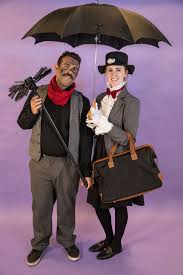| Halloween in The Workplace |
| Celebrating the Halloween holiday by allowing employees to dress up in their favorite, yet tasteful costumes and having activities associated with the holiday, may promote an atmosphere of playfulness and break down barriers among work groups. All activities that work environments need to help reduce stress and shape a positive company culture among their employees. Some activities may include: a pumpkin carving contest, playing games, parties, decorating work areas, etc. However, this is a difficult idea to entertain at a time when any costume can be made to be “sexy”, or to mock political or religious beliefs, or to play into inappropriate racial or disability stereotypes. Of course, you can encourage employees to wear appropriate costumes and make sure managers are aware of possible religious objections to the holiday, but keep in mind that one person’s idea of what’s appropriate won’t always match another’s. RED FLAG TIPS How to Reduce Your Risk So, how do you let employees enjoy themselves but still ensure that no one comes running to your office in tears? To be honest, you can’t, but there are things you can do to reduce your risks. Develop guidelines about when (if ever) costumes can be worn and distribute them before Halloween. If your workplace does not allow costumes, or only allows them for employees who are not seen by the public, expressly say so in your policy. If your policy allows costumes only during a party at lunch or after work, be clear on this expectation. If you do allow costumes, consider setting some guidelines that are safety-related. For example, you may want to limit masks that obscure vision or costumes that excessively muffle sound. Consider setting guidelines that limit the use of accessories or props with costumes, such as guns, knives/swords , whips, chains, torches or other devices involving fire. (real or fake) Adopt guidelines that prohibit costumes that are offensive based on age, sex, religion, national origin, race, or other protected class, such as costumes that reflect stereotypical images of people who are members of protected classes. Adopt guidelines that prohibit sexually suggestive costumes. Remind employees that they must behave with professionalism even while in costume, and to refrain from engaging in behavior while in costume that they would not normally engage in, such as touching, grabbing, inappropriate comments or gestures, biting at people’s necks, etc. If there are employees in your workplace who are likely to ignore guidelines, talk with them ahead of time about what they are planning for Halloween to be sure it is appropriate. Limit the consumption of alcohol by cautious pouring or by only providing a limited amount of alcohol for free and providing non-alcoholic options and food along with any alcohol. Arrange for transportation for anyone who appears to be under the influence of alcohol or other drugs. Pull aside anyone who dresses or behaves inappropriately on the spot and discuss the situation with them before it gets too far out of hand. In a party situation, others may pick up on the bad behavior and follow through, especially if the person involved is a supervisor or a popular employee. Stress to all supervisors and managers that they are responsible for setting the tone with appropriate costumes and behavior, and for stopping any conduct that gets out of hand before the situation deteriorates further. If you give awards for costumes, establish awards that will encourage creativity in areas that are not likely to lead to a harassment or discrimination claim (e.g., best group outdoors theme) Do not play group games that are likely to encourage employees to tease or touch each other, such as Twister or Truth or Dare. For additional information, please call our office at (714) 799-1115 |









